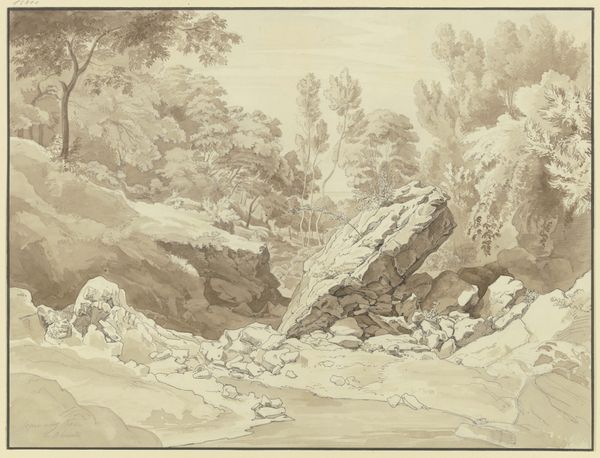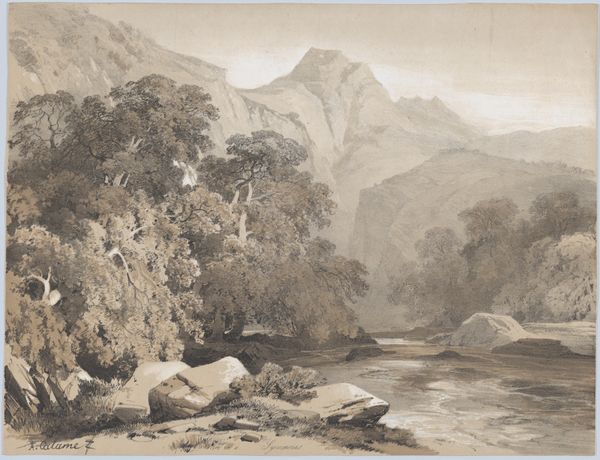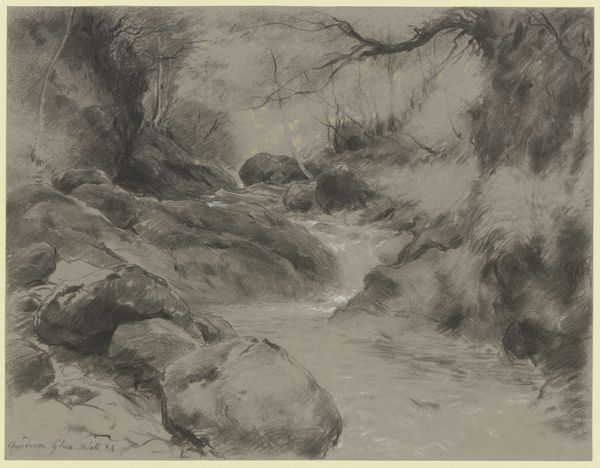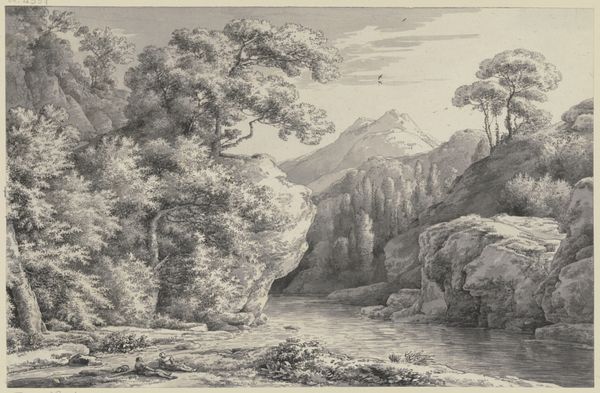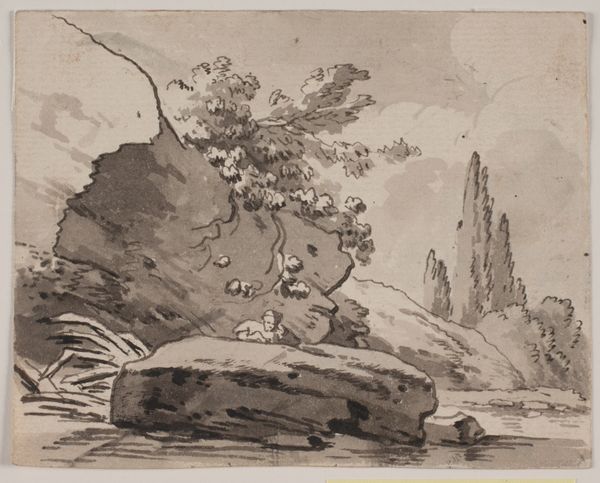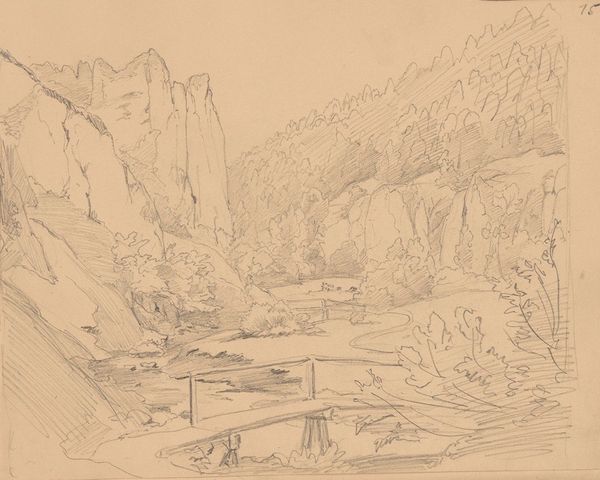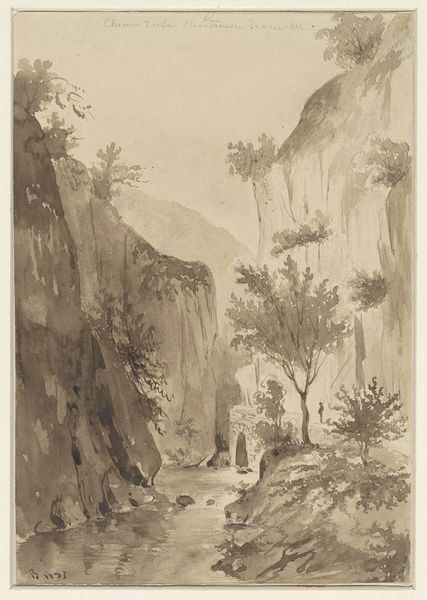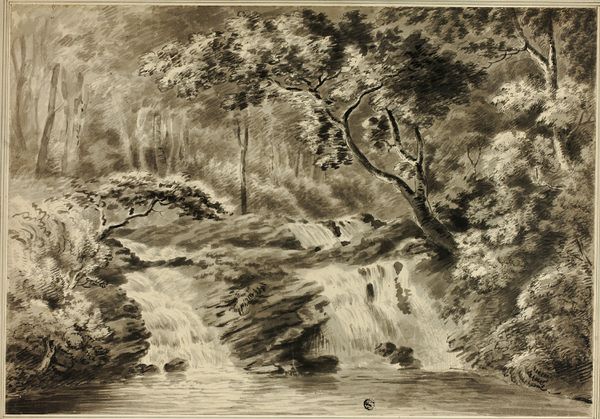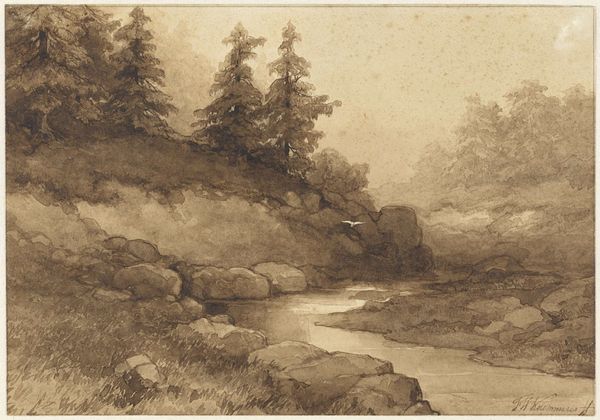
drawing, paper, watercolor, ink
#
drawing
#
landscape
#
charcoal drawing
#
paper
#
watercolor
#
ink
#
romanticism
#
watercolour illustration
#
watercolor
Dimensions: 8 1/16 x 10 7/8 in. (20.4 x 27.7 cm)
Copyright: Public Domain
Curator: We're looking at "Mountainous Landscape with a Brook," rendered by Franz Kobell sometime between 1800 and 1822. He worked in ink, watercolor, and charcoal on paper, a popular medium at the time for landscape studies. Editor: It's breathtaking, isn’t it? Immediately, I'm drawn to the stark contrast of light and shadow. There’s something almost mystical about the way the mountains fade into the background, veiled in mist. Curator: It is quite evocative. Kobell was working within the Romantic tradition, where nature held a powerful position as a source of sublime experience. This wasn't just topography; it was about communicating feeling. The Met acquired it in 1982, by the way. These types of acquisitions really helped shape the encyclopedic holdings, giving our audience the ability to interpret the artistic and social importance of landscape depictions like these. Editor: Precisely! And notice the brook in the foreground – water has always been such a potent symbol. Here, it signifies the passage of time, the fluidity of life... and even spiritual purification if one cares to ascribe a religious component. It connects us to the mountains beyond. And what about the fallen tree, do you think? The use of such symbols is fascinating to me. Is it mere picturesque ruin, or something more? Curator: Perhaps a commentary on nature's impermanence, a vanitas if you will? Fallen logs often suggested a memento mori in painting of the time, to remind us that life and beauty fade away. Artists found patrons that desired very serious messages in paintings like these. And of course, the wilderness itself could serve as a visual allegory for freedom, especially potent after the Enlightenment. Editor: It certainly seems that way! Considering all those intertwined symbols together generates profound connections. But despite all of its evocative potential, this landscape also maintains its captivating simplicity, which provides such beauty. Curator: It’s a strong representation of how artists synthesized observable facts about the natural world with this desire to imbue landscapes with political, emotional, and personal meanings. It adds layers of interest that reach well beyond scenic delight. Editor: Absolutely. A poignant image with much to uncover for those willing to spend time within the work!
Comments
No comments
Be the first to comment and join the conversation on the ultimate creative platform.
